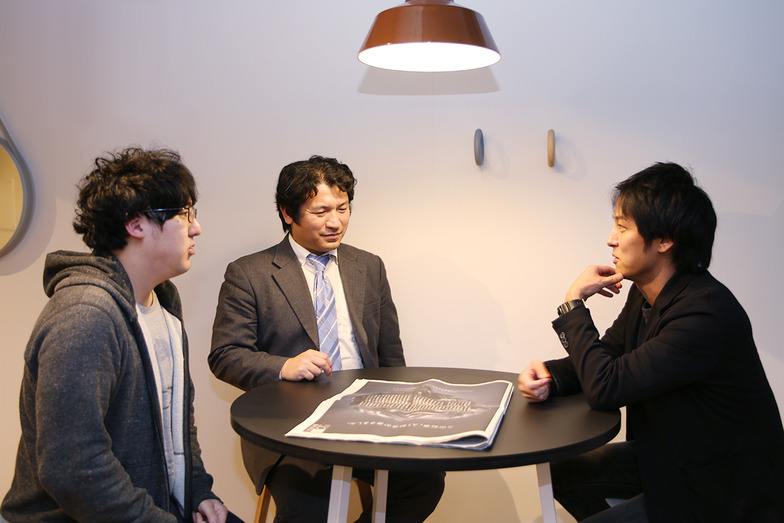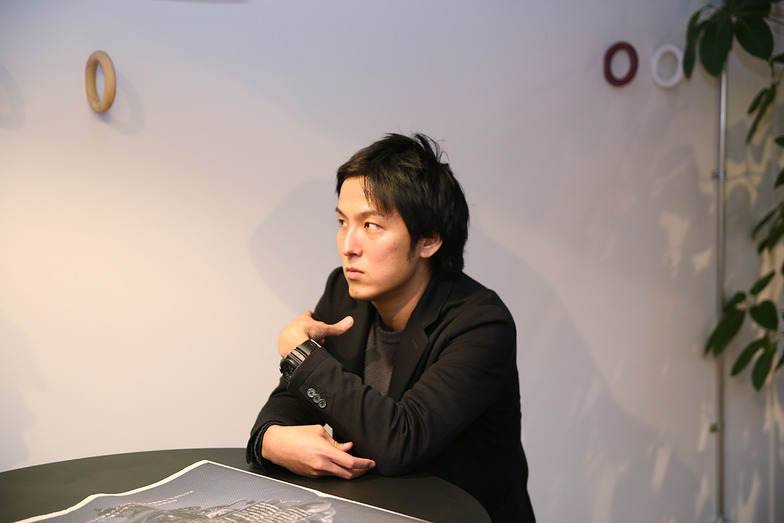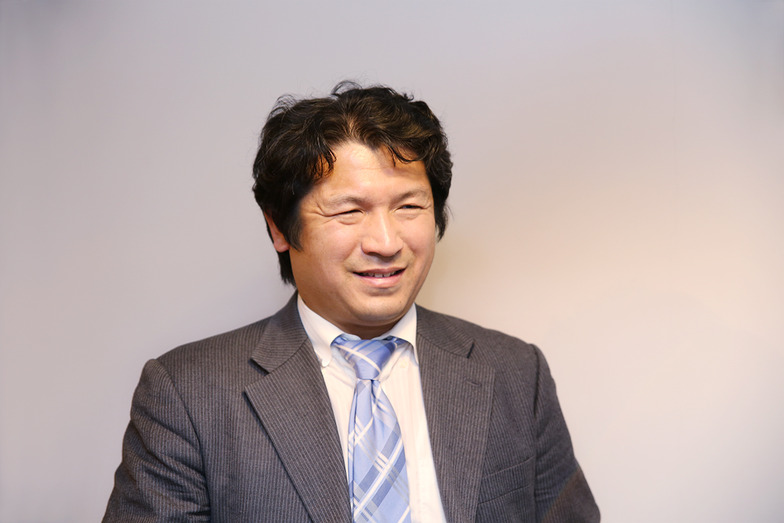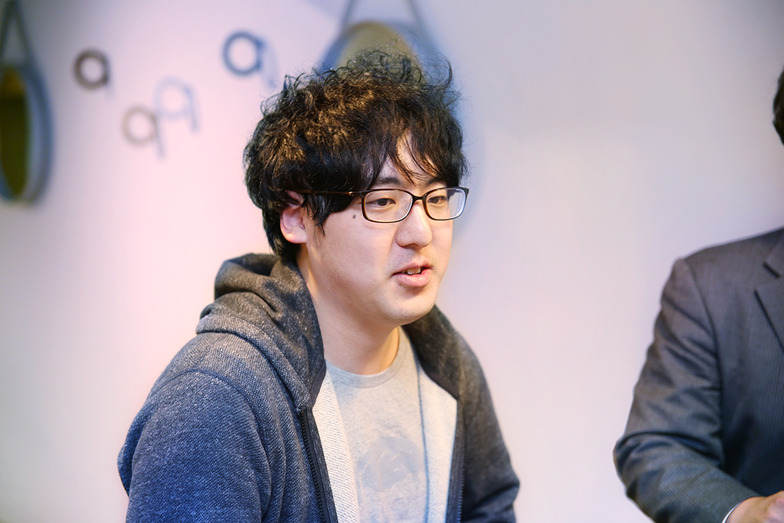Last November, the Chubu Keizai Shimbun celebrated its 70th anniversary. As part of the commemorative project, they published a newspaper article written by artificial intelligence (AI) in the November 1st morning edition, attracting significant attention. Covered extensively across numerous media outlets daily, it appeared not only on TV programs but also in national newspapers within the same industry, achieving over 100 exposures. How was this AI article, which succeeded in generating unprecedented buzz for a regional paper, actually created? Mr. Shunsuke Ikegami from the Data Section, Mr. Kenta Nakamura from Bit-A, and Mr. Yoshifumi Sato from Dentsu Inc. Third CR Planning Bureau, who were involved in the project, discussed the project's retrospective and the future of AI.
※Furthermore, at the end of the article, we present a summary written by the AI itself about this roundtable discussion. How does the AI evaluate the content discussed by the three participants? Please read to the very end.

After reading tens of thousands of text data, it writes "authentic-sounding articles"
-First, I'd like you to look back on this commemorative project.
Sato: Our in-house creative team (CD&AD Kazunori Kawakoshi, CW Iori Anegawa, PL&PR Yoshifumi Sato, CW&CT Kosuke Fukui) was exploring whether we could collaborate with Media Services / Newspaper Division of Dentsu Inc. to create an entirely new newspaper project. It all started when Daisuke Nemoto from the Newspaper Division approached our team with this request. When asked to create "a groundbreaking page for the Chubu Keizai Shimbun's 70th anniversary," we started thinking: Could we come up with a project bold enough to challenge the current state of newspapers? Through various discussions, the idea of "having AI write the 70th anniversary article" emerged.
Everyone thought it was a great idea, but we were initially unsure about its feasibility (laughs). However, we felt it would be exciting if a newspaper company, which conveys the times, could pioneer the next era itself. We imagined this project could hint at the future of newspapers.
We then decided to thoroughly explore whether it was feasible. We approached Mr. Nakamura, who works in AI and runs "Digimara Lab," a media outlet covering cutting-edge technologies like AI.

Nakamura: I was genuinely surprised when I first heard about this project. That a newspaper company would adopt AI! It was genuinely novel for the industry, and after publication, we got significant reactions from other newspapers too.
My role in this project was overall coordination: designing the project plan, managing progress, and assigning the engineers to generate the AI articles. As the first step, we asked Ikegami from the Data Section, who researches natural language processing using AI, to handle the text generation.
Ikegami: When I heard about the project, I thought it was very ambitious and interesting. However, AI text generation works fine for short texts that fit into patterns, like financial reports or sports results. This time, though, it involved a long text of 21 characters per line and 32 lines, with the premise of "narrating 70 years of history." We wouldn't know until we tried.
Even so, this project represents a new challenge: AI, which has primarily been discussed in terms of technology, entering the fields of advertising and marketing. I wanted to be part of that.

From left: Mr. Sato, Mr. Ikegami, Mr. Nakamura
Sato: I believe the overarching theme for this 70th-anniversary article was to create content true to the Chubu Keizai Shimbun's character. Technologically speaking, how did you develop the AI?
Ikegami: The defining feature of AI is its ability to analyze vast amounts of data and learn autonomously. For this project, we first fed the AI a massive volume of past Chubu Keizai Shimbun articles, teaching it the distinctive writing style and tone that defines our "character." Then, we had it study articles from our founding era and other historically relevant past pieces. I believe we incorporated data from roughly tens of thousands of sentences.
Nakamura: For example, if an article started with a phrase like "~ years ago," the AI would observe how that sentence connected and concluded. It learned how to generate history-related sentences autonomously in this way. I believe what it does isn't that different from humans.
Ikegami: On top of that, we provided a simple article structure, and the AI created the final text.
Sato: Honestly, I expected much lower quality writing at first (laughs). But seeing the results was truly astonishing! The finished product was nearly indistinguishable from human writing. In fact, I was worried people might not believe it was AI-generated—it really drove home how far the technology has advanced.
Nakamura: The fact that we received reactions from various media outlets after publication might be a sign that the countdown to AI's practical implementation has begun.

Mr. Nakamura
A future where AI critiques AI-written content is near
-Now, I'd like to discuss the present and future of AI. Interest in AI is skyrocketing, but what's driving this?
Ikegami: The data we possess is expanding, and we now have big data that humans cannot handle. The need for AI is growing as a tool to properly process and analyze this data. Going forward, because it can handle massive data processing, things that were impossible before will become possible.
Nakamura: This project exemplifies that. The Chubu Keizai Shimbun articles embody a distinctive "essence" cultivated over 70 years. Analyzing this by having humans read and examine vast numbers of articles is extremely difficult. AI's strength lies in its ability to instantly perform processing and analysis beyond human capacity, while also learning from it.
Ikegami: When we imported the newspaper company's data, it struck me: 70 years' worth of articles accumulate 70 years' worth of events and their causal relationships. Things like, "When this happened, that happened here." As AI learns this, it might uncover causal relationships humans wouldn't conceive. It's exactly like the saying, "When the wind blows, the barrel maker profits" (laughs). I believe the data accumulated over time, combined with AI, will create new value.

Mr. Ikegami
Nakamura: Satellite launch technology has advanced recently, and the data coming from space is exactly that. Like, if this happens in this region, then that phenomenon occurs at this distant location. It's all data humans can't fully analyze, so AI could be very useful.
Sato: Space data from satellites and such has an absolutely massive volume of information, so the connection to AI is profound, right?
Nakamura: Google's AlphaGo, which made headlines, played thousands of games per second against itself. That's how the AI learned winning strategies. This was only possible because of its processing speed. Actually, text generation works similarly. If you create an AI that acts as an editor, AI systems can judge the quality of text among themselves and rapidly improve accuracy at incredible speeds.
Ikegami: That's right. In this project, AI only handled text generation, but ideally, another AI would evaluate the text created by the first AI, and the text would be refined based on that feedback.
Nakamura: To create an editor AI, you feed it a massive amount of text that has been marked up with red corrections. By learning the differences between the original draft and the corrected version, the AI learns to distinguish between "good writing" and "bad writing." Then, by having the writing AI and the editor AI interact, the AI evaluates what the AI wrote, the AI that absorbed that feedback rewrites it, and that new version is evaluated again by the AI. This way, the AI can continuously improve the writing on its own.
Sato: We've always said that moving prose is something "only humans can write," but hearing this makes me think it might be an area AI can tackle too. After all, there are textbooks for screenwriting, and people learn creative methods. If we bring that into AI, it might not be impossible.

Mr. Sato
Nakamura: While it's still difficult for AI itself to create something from scratch or for humanoid robots to become practical, I believe AI designed for specific tasks will increasingly enter the real economy.
Sato: AI specialized in a single task, like "writing text," will likely be the first to become widespread.
Ikegami: Eventually, we might see AI writing newspaper articles, then AI reading them aloud, and AI taking action—with AI systems in different fields collaborating and functioning together. I believe we will surely reach that kind of society.
Sato: AI will likely become more integrated into our lives and transform society beyond our imagination. While this discussion focused on AI, combining cutting-edge technology with the time-honored newspaper could further expand the possibilities and future of media.
※From behind-the-scenes project stories to the future of AI, the three-way discussion was rich and insightful. And now, we present the AI-generated summary of this very discussion. Please take a look.
[AI Summary of the Roundtable]
When asked to create an unprecedented print advertisement for the Chubu Keizai Shimbun's 70th anniversary, we first considered whether we could develop a project bold enough to break through the current state of newspapers... Through various discussions, the idea of "having AI write the 70th anniversary article" emerged.
This time, we first fed the AI a vast archive of Chubu Keizai Shimbun's past articles, training it to learn the newspaper's distinctive writing style and tone. For example, if an article began with a phrase like "~ years ago," the AI observed how that sentence connected and concluded within the context of past articles. We then provided a simple article outline, and the AI generated the final text.
Honestly, I was more worried about whether people would believe the AI wrote it, which made me realize the technology has advanced far beyond my expectations. The positive reactions we received from various media outlets after publication might be a sign that the countdown to AI's practical implementation has begun.
In this project, AI handled only the text generation. Ideally, though, another AI would evaluate the text created by the first AI, and the text would be refined based on that feedback. If we had an AI writer and an AI editor interacting, the AI could evaluate what the AI writer produced, and then the AI could evaluate what the AI reader wrote, allowing AI alone to continuously improve the text. While it's often said that moving prose is "something only humans can write," hearing about this makes me think it might be an area AI can also master.
While it's still difficult for AI itself to create something from scratch or for humanoid robots to become practical, I believe AI specialized in specific tasks will increasingly integrate into the real economy. AI focused on a single task, like "writing text professionally," will likely become widespread first. Eventually, we might see AI writing newspaper articles, another AI reading them, and yet another AI acting on that information – different AI systems collaborating and functioning together.
AI will likely become more integrated into our lives going forward, transforming society in ways we can scarcely imagine. While this discussion focused on AI, combining cutting-edge technology with the time-honored newspaper could significantly expand the possibilities and future of media.










